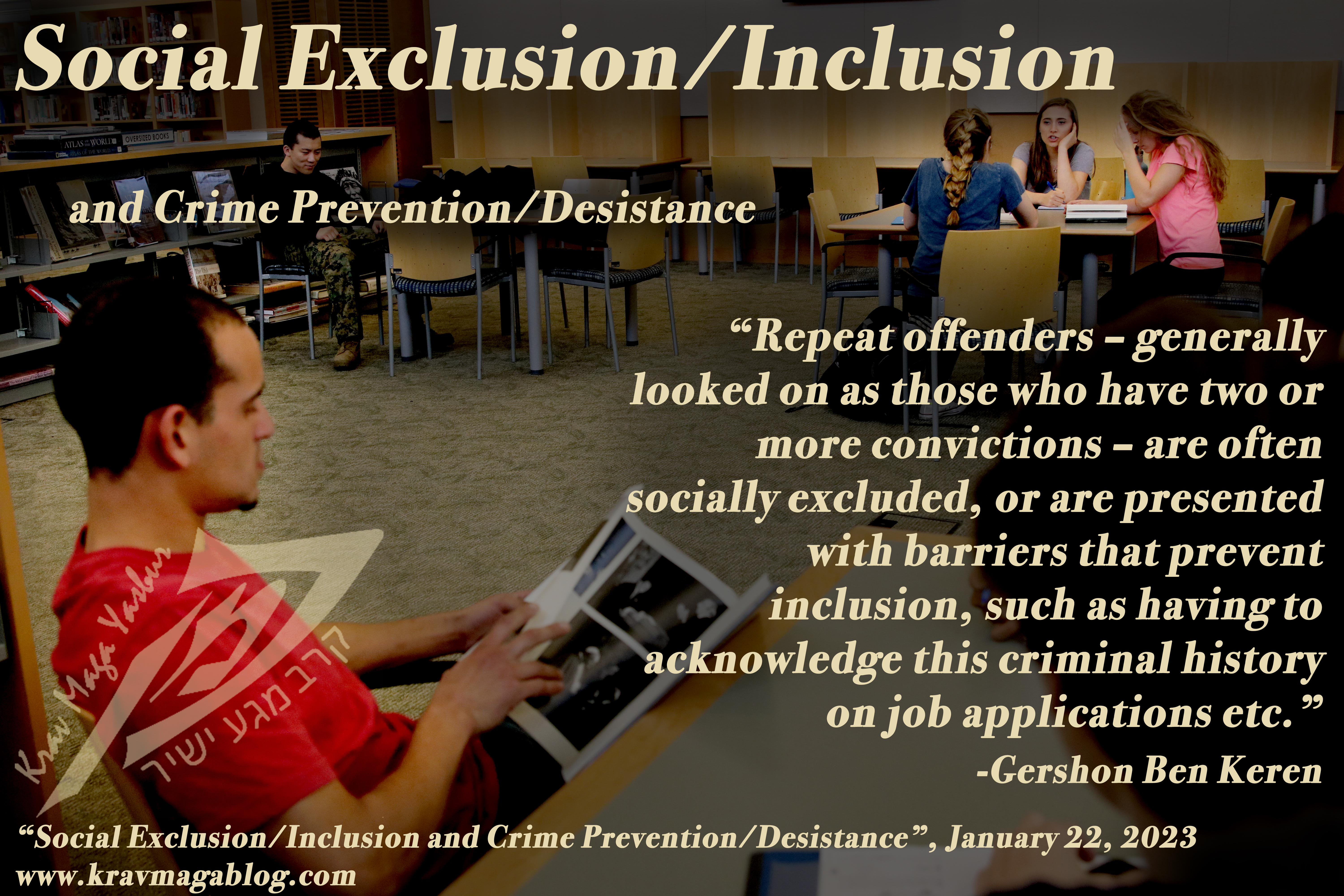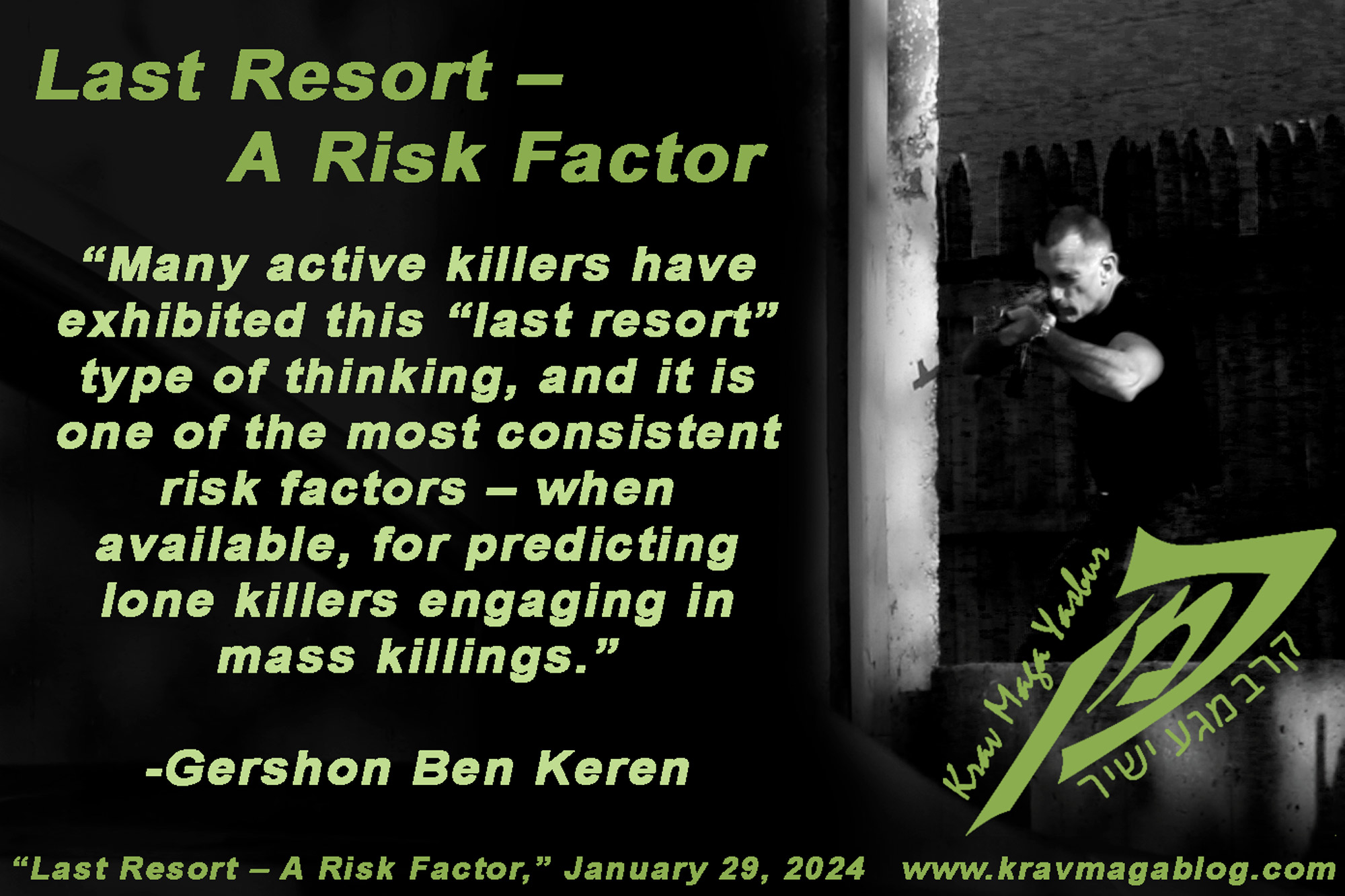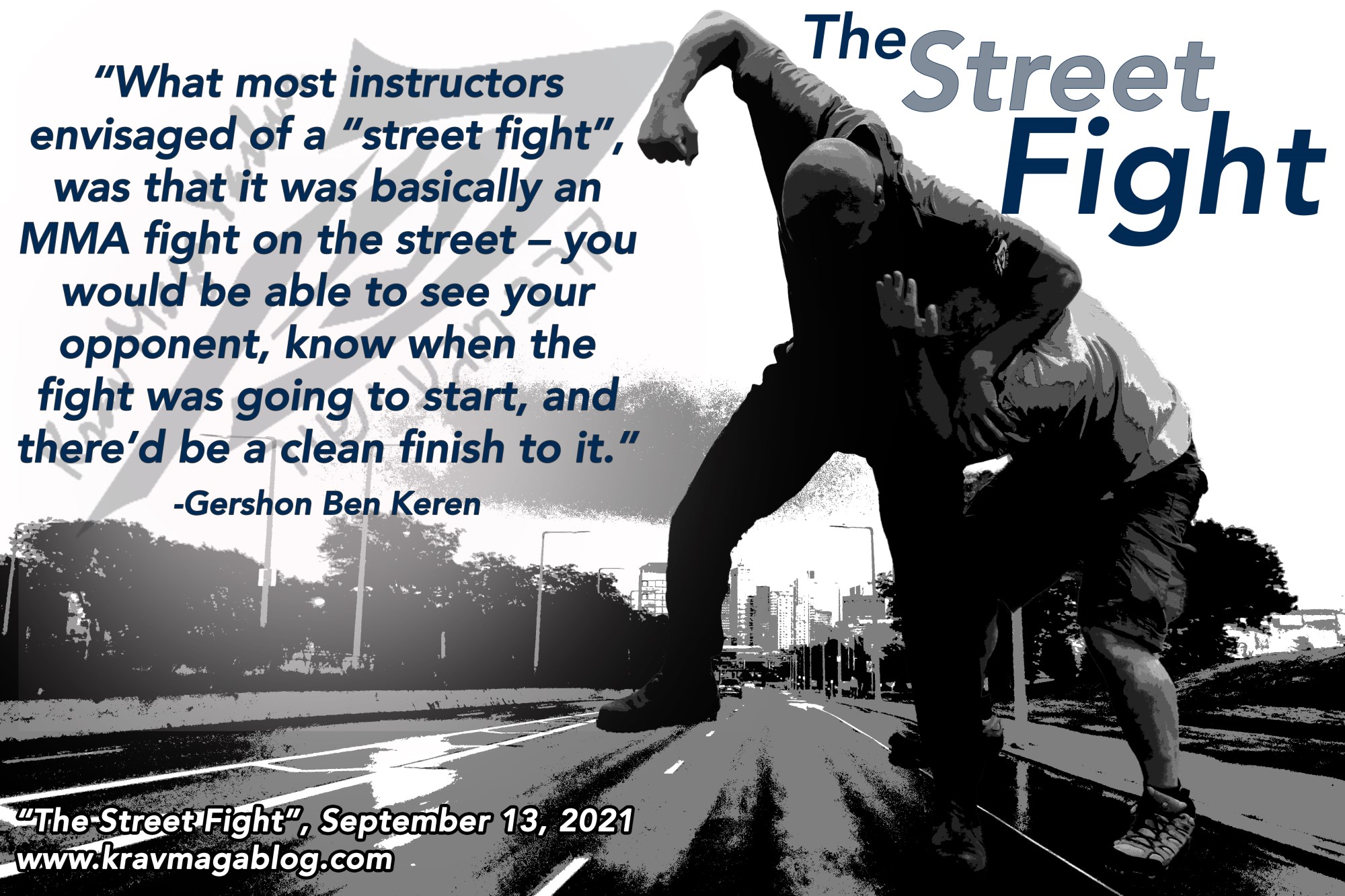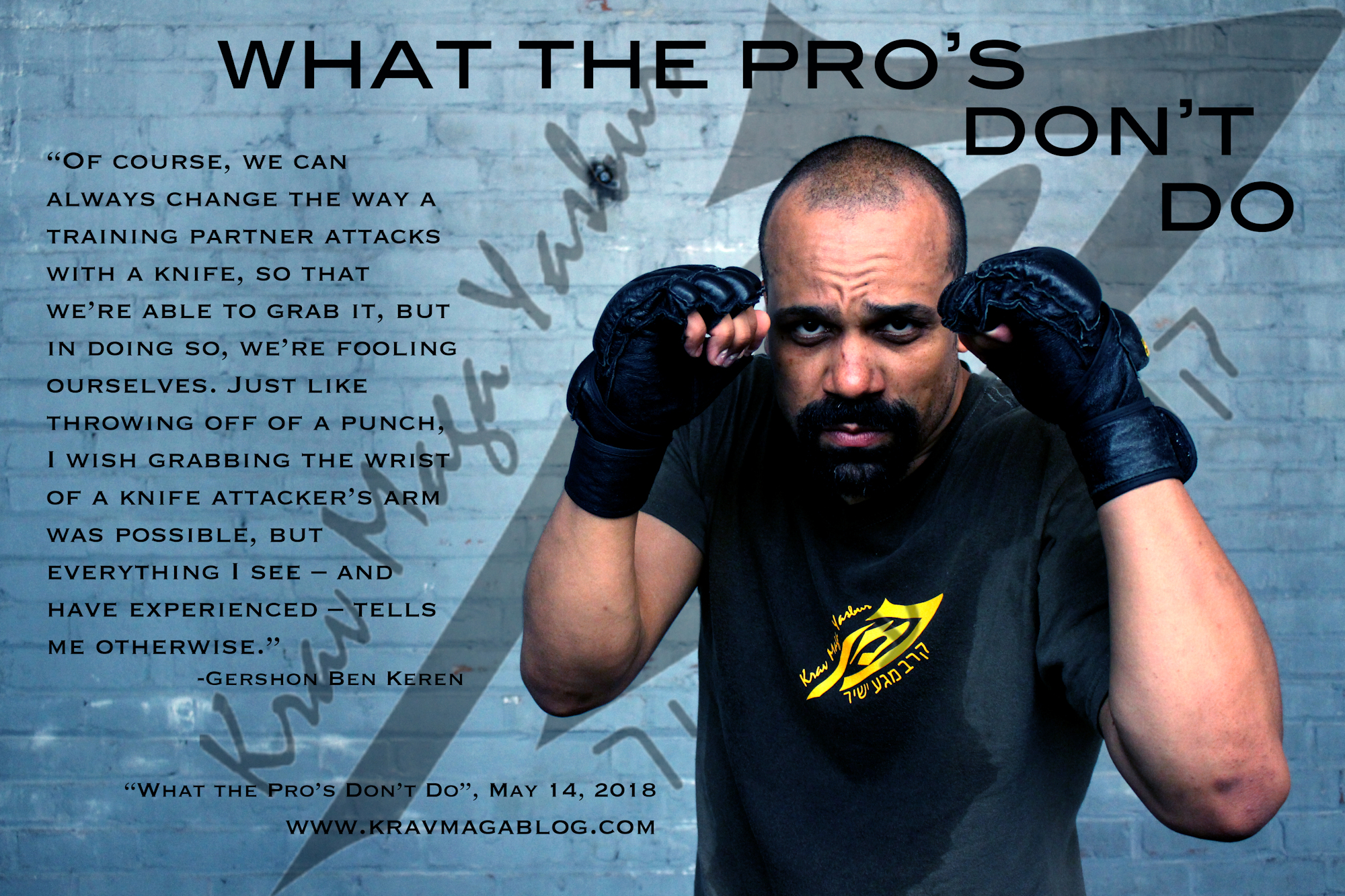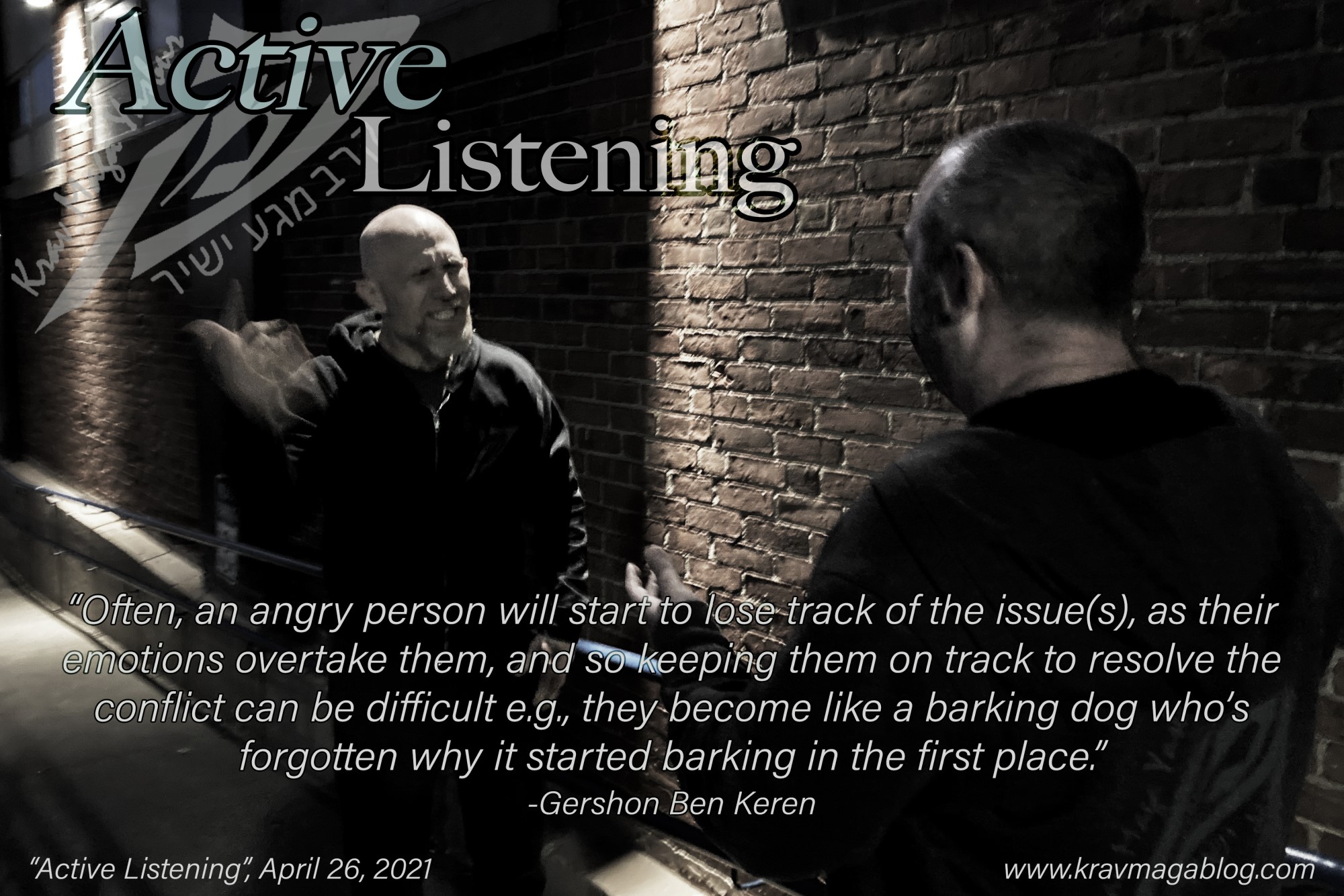Conflict Negotiation, is an article written by Gershon Ben Keren, a 5th Degree Black Belt in Krav Maga, who teaches Krav Maga in Boston, MA. He has also authored three Amazon best-Selling Books on Krav Maga.
In this week’s article, I want to walk through some Bodycam footage of an incident in Wales (UK), wherein a man threatening self-harm – and eventually the officers that were trying to deal with the incident – was successfully subdued and apprehended. The officer involved in the crisis negotiation did a phenomenal job, in an extremely stressful, and potentially high consequence, situation and demonstrates policing at its best. Policing is both a science and an art, and its science is often downplayed. Hopefully, this analysis of the incident will demonstrate some of the “science” used in crisis negotiation. The footage can be accessed by clicking here
The footage starts off with an order that is presented almost as a request and as a favor i.e. “I want you to put the knives down for me”, as opposed to a direct order e.g. “Put the knives down”. The use of “I want”, not even “I need” (which is used later in the process), is the start of establishing a relationship and building rapport with the individual being dealt with, and is one of the first steps in any crisis negotiation attempt. This is not applicable in every situation, but when there’s not an “immediate” danger (and that is different to imminent), and there’s time to talk, it’s an important stage in the de-escalation and conflict resolution process: you de-escalate and take the emotion out of the situation, and then you attempt to resolve the conflict – you cannot resolve a conflict with a highly emotional and volatile individual.
The officer acknowledges the body camera when questioned and explains that he is not able to negotiate on whether the incident is filmed or not – not telling the truth such as making out that the camera wasn’t on, as well as creating legal issues (the individual is now being filmed covertly, and without their knowledge), is something that could damage any trust that’s been built, if it was found out later that he’d been lied to. This also represents a good “soft” opportunity for him to draw a line and establish the expectation, on the part of the individual being dealt with, that there are boundaries to the negotiation process. It is often a good idea to set this expectation early on, so that person being dealt with knows that negotiations shouldn’t be interpreted as them getting their own way i.e. it’s a negotiation; there may be things that the officer can agree to do, but there are also going to things that they can’t. Getting somebody to realize this early on, means that they are not going to be surprised later, when their demand of a fast car to a private airfield, etc. is denied.
As the man refuses to put the knives down, the request/favor is articulated as an order i.e. “put the knives down for me”, the “I want” is dropped – this is no longer a “request”, but the officer is still maintaining the relationship i.e. he keeps the “for me” in with his demand. He then states, “I don’t want you to harm yourself or anyone else”. This is a demonstration of concern for the person he is dealing with, and contains an inherent “promise” that if the individual complies now he won’t be hurt later; which may be one of his concerns about acquiescing to the officer’s orders/requests. Stating that he does not want “anyone” harmed is a good attempt, to externalize the individual’s view of the world. People who are looking to cause themselves harm, commit suicide etc. do something referred to as “tunneling” where their view of the world shrinks, until the only way they see/understand anything is through their internal and very narrow field of vision. This is also an appeal i.e. “I” do not want anyone harmed, and I do not believe “You” do, etc. The officer for the first time is also acknowledging the consequences of an action; before the person was just holding the knives, now the officer is moving him into the role of an actor who can perform a harmful action. “I want” is now replace with “I need” – a step up in language, based on the individual being identified as someone who is indicating their potential desire and ability to perform a dangerous action.
The next question is perhaps one of the most powerful ones that can be asked in the de-escalation process i.e. “Is there anything I can reasonably say or do, that is going to help me and you to put those knives down?” When somebody is emotionally stressed, they understand conflict as either being a matter of posturing and submission, or one of fight or flight. Telling somebody what to do is usually interpreted as posturing/fighting talk. By asking a question like this, it forces the individual to engage with their “reasoning brain”, and use non/less emotional thought processes, to consider alternatives to acting violently. Using the term “reasonably”, gives the officer the right to refuse, and again sets the boundaries around the negotiation e.g. he is not going to agree to everything. It also requires the individual being dealt with to think a little harder than they might have to normally when thinking about and considering alternatives, as they need to now be filtered by the condition of “reasonableness”. The more you can get a person to think when they are emotional, the less emotional they become.
When asked to take the Bodycam off it is explained again that this isn’t an option, and the boundary is demonstrated to be a firm one – a capitulation to an often repeated request will usually be seen as a weakness that can be exploited. The officer in the next stage of his rapport-building, asks “what’s your name?”, identifies himself and then reiterates the previous question using his name i.e. “Paul, is there anything I can reasonably say or do, that is going to help me and you to put those knives down?” He then informs him of the possible consequences of his actions, “if you continue to hold those knives the way you are, we may be forced to use tasers”. Using the same question, prevents the conversation going round in circles. Stating that they “may be forced to use tasers” is framed so that his actions which will determine if this option is considered, i.e. it can be avoided. An important note here, is that the officer wants to make sure this has been understood i.e. “do you understand that?” It is important in any crisis negotiation process to ensure that the person you are dealing with is keeping up with the process; this can be done by summing things up and asking questions, etc.
As things escalate, when the individual being dealt with (Paul) comes towards the door, a new officer takes over – this strategy of switching negotiator can be useful if it seems like one person isn’t getting through. The officer continues using familiarity, in referring to him as “Mate”. He also uses a useful tactic in crisis negotiation, when he says “whoa, whoa…”. Asking the person to slow things down, rather than commanding them to “stop” etc. is a useful de-escalation tactic. It’s one that I used to teach tele-collections agents to use when they were on the phone with angry customers/debtors e.g. “Can you slow down what you’re saying as I’m having difficulty understanding you?” This was a much better method at de-escalating emotional and volatile calls than telling (i.e. posturing) somebody to “calm down” or to “stop shouting” – both commands that involve posturing to the individual even if this isn’t intended. As people slow down their thinking and talking, they naturally become less emotional and volatile. Getting people to think hard and slowly about what they are doing, along with potential alternatives and possible consequences is a key part of de-escalation and conflict resolution.
When necessary and the danger is imminent the officer uses commands i.e. “Step away from the door!” and then a summation of the situation, “Mate, all we need to do is put the knives down”. The use of the term “we” instead of “you”, shows that everybody is working together and is invested in dealing with the incident. It’s not an “Us” and “You” situation, which could isolate the individual being dealt with, but one where everybody involved, is working together to achieve a successful outcome. Using the word “Just”, in “Just, put the knives down, mate”, also presents the situation as a very simple one, and downplays the potential repercussions that the individual may face, giving them an easy and simple way out.
An important part of any crisis negotiation, is recognizing when de-escalation and conflict resolution, have run their course and things need to get physical. That point is realized when Paul starts to come towards the door brandishing the knives at the officers. He is now not only an actor who has the potential to cause harm, but he is acting out that role. The time for talking and negotiation is over, and action is required – working as a team, they open the door and when Paul bursts through with the knives, deploy the taser, followed by physical restraint. The point of this article is not to discuss whether a taser is effective or not, or whether different physical tactics could have been employed, etc., however, I think the use of the door in slowing down the attack, showed a good use of the physical environment, and the use of force was minimal. Another point to note, is that after the aggressor/attacker has been restrained, the officer continues using the same tone, etc. and does his best to reassure an obviously troubled man that everything is alright.
The whole incident was over in a few minutes, and whilst a few erratic stabs hit one of the officer’s stab vest, they were confident enough to trust that it would do its job whilst they concentrated on taking the movement away from the attacker’s arms – if the knife can’t move, it can’t cut. It would be wrong to think that every situation involving a potential assailant armed with a knife could be handled this way, however in this incident the officer in charge had a good reading of the situation, went through an excellent process of crisis negotiation, and understood fully when force would have to be used, and what level was necessary.
0 COMMENTS